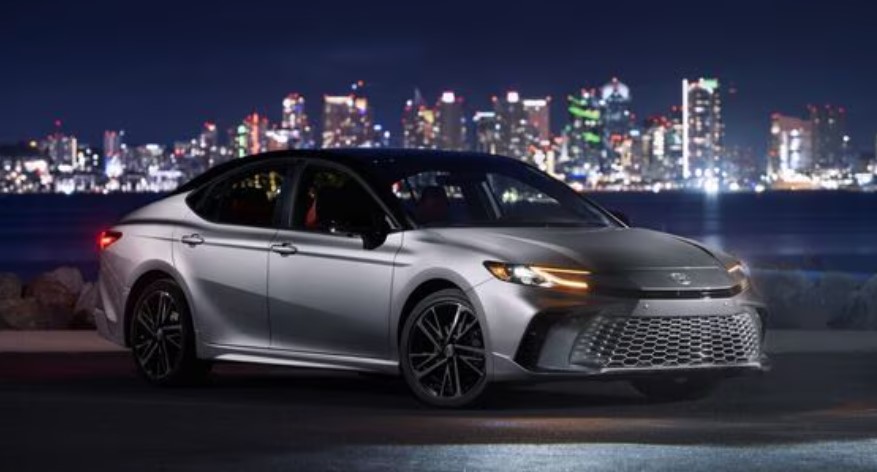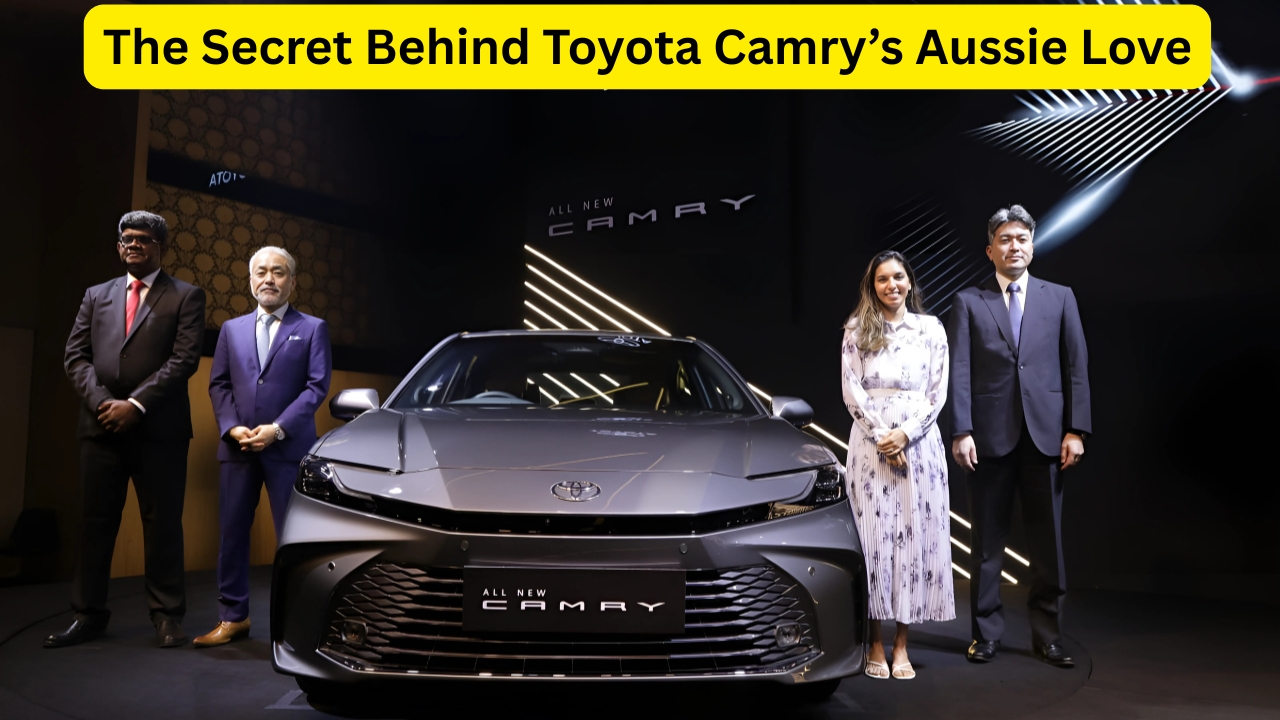The Toyota Camry has long held a special place in the hearts of Australian drivers, maintaining its position as the top-selling medium-sized sedan under $60,000. Despite the global shift towards SUVs and the rise of electric vehicles, the 2025 Toyota Camry, now in its ninth generation (XV80), continues to dominate the Australian market with its hybrid-only lineup, refreshed design, and unmatched reliability.
Launched in Australia in September 2024, the new Camry has solidified its reputation as a practical, efficient, and value-packed choice for families, fleet buyers, and rideshare drivers. This article explores the reasons behind the Camry’s enduring popularity, drawing on recent developments and reviews from the Australian automotive landscape.
A Legacy of Trust and Reliability
A History Rooted in Australia
Since its introduction to Australia in 1983, the Toyota Camry has sold over one million units, with more than two million manufactured locally, including 1.3 million for export.
This legacy has built a strong foundation of trust among Australian consumers. The Camry’s reputation for durability and low maintenance costs makes it a go-to choice for those seeking a dependable vehicle, whether for personal use or commercial purposes like ridesharing.
Cultural Significance
The Camry’s appeal extends beyond its mechanical reliability. It has become a cultural staple, often referred to as the “cabbie’s choice” due to its widespread use in Australia’s rideshare and taxi industries. Its ability to withstand high mileage and demanding conditions has made it a favorite among Uber drivers and fleet operators, reinforcing its status as a practical workhorse.
The 2025 Toyota Camry: A Hybrid-Only Revolution
Embracing Hybrid Technology

The 2025 Camry marks a significant shift by offering a hybrid-only lineup, a bold move that aligns with Australia’s growing emphasis on fuel efficiency and environmental consciousness. Powered by Toyota’s fifth-generation 2.5-litre hybrid powertrain, the Camry delivers a combined output of 170kW and an impressive fuel economy of 4.0L/100km, according to the Australian ADR81/02 standard.
This 11% improvement in fuel efficiency over its predecessor makes it one of the most economical sedans in its class, appealing to cost-conscious buyers in an era of fluctuating fuel prices.
Three Variants for Diverse Needs
The Camry is available in three trim levels—Ascent, Ascent Sport, and SL—catering to a range of budgets and preferences. Pricing starts at $39,990 before on-road costs for the Ascent, $42,990 for the Ascent Sport, and $53,990 for the top-tier SL. While these prices reflect a slight increase compared to the previous model, the enhanced features and hybrid efficiency justify the cost.
The SL variant, in particular, offers premium features like leather upholstery, a panoramic sunroof, and a nine-speaker JBL audio system, giving it a near-luxury feel at a fraction of the cost of competitors like the Audi A4 or Skoda Superb.
Design and Technology Upgrades
Sleeker, Modern Styling
The 2025 Camry features Toyota’s “Hammer Head” design language, characterized by a wider front grille, sharper LED headlamps, and C-shaped LED taillights. Measuring 4,920 mm in length, 1,840 mm in width, and 1,455 mm in height with a 2,825 mm wheelbase, the new Camry is slightly larger than its predecessor, offering a more imposing presence and a spacious 500-litre boot.
Eight exterior color options, including Glacier White, Jasper Red, and Saturn Blue, add to its visual appeal, with two-tone paint schemes available on the SL trim for a premium touch.
Tech-Packed Interior
Inside, the Camry has undergone a significant overhaul, featuring dual 12.3-inch displays for infotainment and the instrument cluster, wireless Apple CarPlay and Android Auto, and Toyota’s Connected Services for remote vehicle monitoring.
The SL variant adds luxury touches like heated and ventilated front seats, a heated steering wheel, and three-zone climate control, making it a compelling alternative to more expensive luxury sedans. Reviewers have praised the interior for its spaciousness and premium feel, though some note minor drawbacks like noisy interior plastics.
Advanced Safety Features
Safety is a key factor in the Camry’s appeal, with the 2025 model equipped with Toyota’s Safety Sense 3.0 suite. This includes pre-collision assist, radar-based cruise control, lane-tracing assist, a 360-degree camera, and nine airbags. These features ensure the Camry meets modern safety expectations, making it a top choice for families and safety-conscious buyers.
Performance and Driving Dynamics
Smooth and Efficient
The Camry’s hybrid powertrain delivers a refined driving experience, with a nicely weighted steering wheel and a sporty suspension setup that ensures confidence on highways and corners. The e-CVT transmission, paired with a 10-speed Sequential Shift mode, provides a smooth and responsive drive, though some reviewers note the lack of a “range-topping” powertrain option and a slightly disappointing steering feel.
Real-world testing has shown the Camry XSE AWD achieving a fuel economy of 36.7 mpg (approximately 6.4L/100km) in mixed driving conditions, slightly higher than the claimed 4.0L/100km but still impressive for a mid-size sedan.
Practicality for Families
With its spacious interior and ability to comfortably seat four adults, the Camry is an ideal family car. The combination of fuel efficiency, safety features, and ample cabin space makes it a practical choice for daily commutes, long-distance drives, and family outings.
Market Position and Value Proposition
Outselling Competitors
In 2024, Toyota sold 70,000 more Camrys than Corollas in the United States, and in January 2025, the Camry outsold the Corolla by 19,007 to 17,341 units.
While specific Australian sales figures for 2025 are still emerging, the Camry’s dominance in the medium-sized sedan segment is evident, with competitors like the Mazda 6 and BYD Seal trailing behind. Its hybrid-only approach gives it an edge over rivals like the Audi A4, which relies on a mild hybrid system, and the fully electric BYD Seal, which may not suit buyers seeking a hybrid’s balance of efficiency and range.
Affordability and Low Running Costs
Starting at just under $40,000, the Camry remains competitively priced, especially when compared to SUVs like the Toyota RAV4 or Kluger. Its low fuel consumption and capped-price servicing at $255 per service (every 12 months or 15,000 km) further enhance its value. A five-year, unlimited-kilometer warranty adds peace of mind, making the Camry a cost-effective choice over its lifespan.
Challenges and Criticisms
Minor Shortcomings
While the Camry excels in many areas, it’s not without flaws. Some reviewers have criticized the lack of auto-dimming side mirrors, which can be blinding in certain conditions, and a less intuitive cruise control setup compared to competitors like the Honda Accord.
The absence of a sport-themed SX variant and a high-performance powertrain option may disappoint enthusiasts, but these are minor gripes in an otherwise well-rounded package.
The 2025 Toyota Camry remains Australia’s top choice due to its blend of reliability, fuel efficiency, advanced technology, and value for money. Its hybrid-only lineup, refreshed design, and comprehensive safety features make it a standout in a declining sedan market.
Whether for families, fleet buyers, or rideshare drivers, the Camry continues to deliver a compelling package that’s hard to beat. As Toyota pushes towards a greener future, the Camry’s evolution ensures it remains a benchmark for sensible, practical, and modern transportation in Australia.
FAQs
What is the starting price of the 2025 Toyota Camry in Australia?
The 2025 Toyota Camry starts at $39,990 before on-road costs for the Ascent variant.
Is the 2025 Camry available with a non-hybrid engine?
No, the 2025 Toyota Camry is exclusively hybrid in Australia, powered by a 2.5-litre hybrid system.
What safety features does the 2025 Camry offer?
The Camry includes Toyota’s Safety Sense 3.0 with pre-collision assist, lane-tracing assist, radar-based cruise control, nine airbags, and a 360-degree camera.

